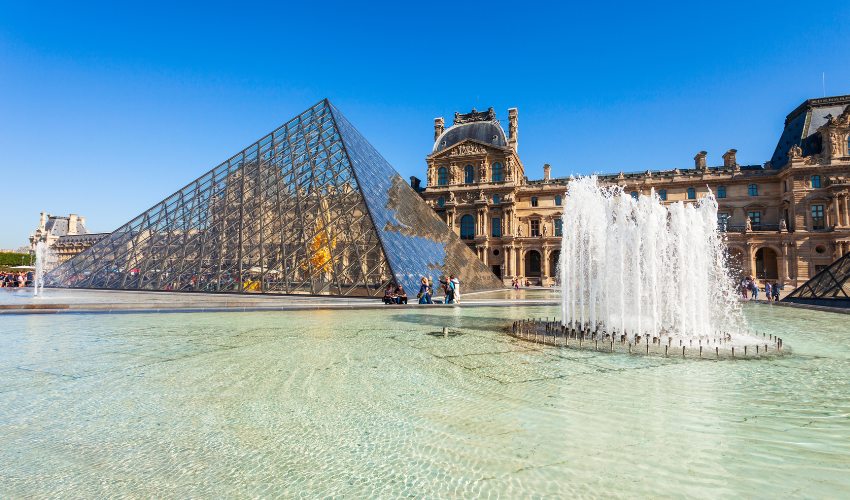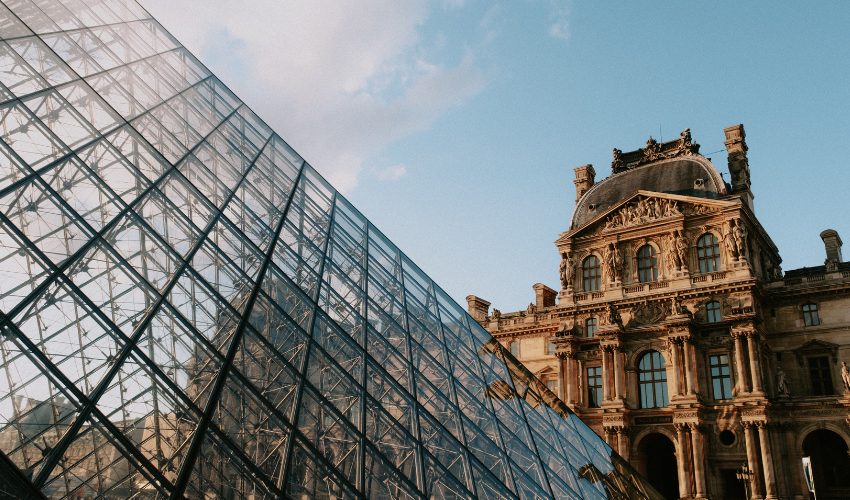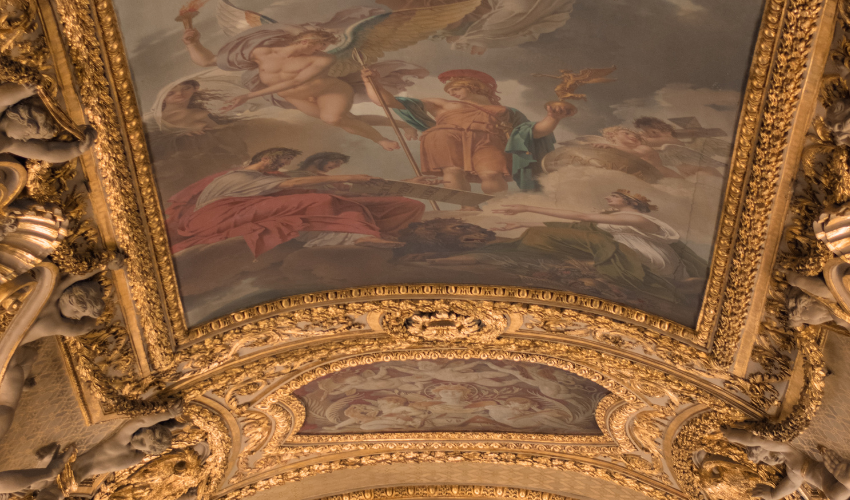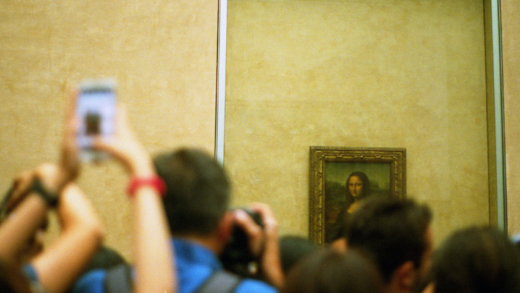The Louvre Museum, located in the heart of Paris, France, is one of the world’s largest and most famous museums, attracting millions of visitors each year. The museum, which is housed in the Louvre Palace, has a rich history that spans over eight centuries, and its collections and exhibitions showcase some of the most significant art and cultural artifacts in the world. In this article, we’ll delve into the history, collections, and exhibitions of the Louvre Museum and provide a comprehensive guide for visitors looking to explore this iconic Parisian landmark.
The History of the Louvre Museum

The Louvre Palace, which now houses the Louvre Museum, has a rich history that spans over eight centuries. It was originally built as a fortress in the late 12th century and was later converted into a royal palace in the 16th century. In 1793, during the French Revolution, the palace was turned into a museum, and it has since become one of the world’s largest and most important museums, showcasing some of the world’s most significant works of art and cultural artifacts.
From Fortress to Royal Palace
The Louvre Palace was originally built as a fortress in the late 12th century to protect Paris from foreign invaders. Over the centuries, it was expanded and renovated, and in the 16th century, it was converted into a royal palace. The palace was home to several French kings and queens, including Henri IV and Louis XIV, and was the site of numerous royal events and ceremonies.
The Transformation into a Museum
In 1793, during the French Revolution, the Louvre Palace was transformed into a museum, with the aim of showcasing the nation’s artistic and cultural heritage. The museum was opened to the public in 1796, and it has since become one of the world’s largest and most important museums, with collections and exhibitions spanning a wide range of art, history, and culture.
The Collections and Exhibitions of the Louvre Museum
The Louvre Museum is home to a vast collection of art and cultural artifacts, including paintings, sculptures, decorative arts, and archaeological specimens. The museum’s collections span over 9,000 years of human history, and its exhibitions showcase some of the world’s most famous and significant works of art, including the Mona Lisa, the Venus de Milo, and the Winged Victory of Samothrace.
The Painting Collections
The Louvre Museum’s painting collections are some of the most comprehensive and diverse in the world, with works dating from the 13th to the 19th centuries. The museum’s collections include works by some of the world’s most famous artists, including Leonardo da Vinci, Raphael, Michelangelo, and Rembrandt, as well as works by lesser-known artists from the Renaissance, Baroque, and Impressionist periods.
The Sculpture Collections
The Louvre Museum’s sculpture collections are equally impressive, with works ranging from ancient Greek and Roman sculptures to Renaissance and Baroque masterpieces. The museum’s collections include some of the world’s most famous sculptures, including the Venus de Milo and the Winged Victory of Samothrace, as well as lesser-known works by artists such as Rodin, Maillol, and Bouchardon.
Decorative Arts and Archaeological Specimens
The Louvre Museum’s collections of decorative arts and archaeological specimens are equally diverse and fascinating, offering visitors a unique glimpse into the art, culture, and daily life of civilizations throughout human history. The museum’s collections include a range of objects, such as furniture, ceramics, glassware, textiles, and jewelry, as well as important archaeological specimens, such as ancient Egyptian and Greek artifacts.
A Tour of the Louvre Museum
Visitors to the Louvre Museum can explore its collections and exhibitions through a variety of tours, including guided tours, audio tours, and self-guided tours. The museum is divided into several departments, each with its own collections and exhibitions, and visitors can choose to explore the departments that interest them most.
The Departments of the Louvre Museum
The Louvre Museum is divided into several departments, each with its own collections and exhibitions. Some of the museum’s departments include the Paintings Department, the Sculptures Department, the Decorative Arts Department, the Egyptian Antiquities Department, and the Greek, Etruscan, and Roman Antiquities Department.
Guided Tours and Audio Tours
Visitors to the Louvre Museum can choose to take a guided tour or an audio tour to help them explore the museum’s collections and exhibitions. Guided tours are led by knowledgeable tour guides, who provide insights and background information on the museum’s collections, while audio tours are available in several languages and offer a self-paced exploration of the museum.
Self-Guided Tours
Visitors to the Louvre Museum can also choose to explore the museum on their own, with the help of a self-guided tour. Self-guided tours are available in several languages and provide a map and information about the museum’s collections and exhibitions, allowing visitors to explore the museum at their own pace.
FAQs:
What is the Louvre Museum?
The Louvre Museum is a world-renowned museum located in Paris, France. The museum, which is housed in the Louvre Palace, has a rich history that spans over eight centuries, and its collections and exhibitions showcase some of the world’s most significant works of art and cultural artifacts.
How long has the Louvre Museum been open to the public?
The Louvre Museum was opened to the public in 1796, making it one of the world’s oldest public museums.
What are some of the most famous works of art in the Louvre Museum?
Some of the most famous works of art in the Louvre Museum include the Mona Lisa, the Venus de Milo, the Winged Victory of Samothrace, and the works of Leonardo da Vinci, Raphael, Michelangelo, and Rembrandt.
How is the Louvre Museum divided?
The Louvre Museum is divided into several departments, each with its own collections and exhibitions, including the Paintings Department, the Sculptures Department, the Decorative Arts Department, the Egyptian Antiquities Department, and the Greek, Etruscan, and Roman Antiquities Department.
What kind of tours are available at the Louvre Museum?
Visitors to the Louvre Museum can choose from a variety of tours, including guided tours, audio tours, and self-guided tours.
Conclusion
The Louvre Museum is one of the world’s largest and most famous museums, attracting millions of visitors each year. With its rich history and vast collections of art and cultural artifacts, the museum offers a unique and fascinating glimpse into the art, culture, and history of civilizations throughout human history. Whether you are interested in the works of the great masters, the cultural artifacts of ancient civilizations, or simply enjoy exploring museums, the Louvre Museum is a must-visit destination for art lovers and cultural enthusiasts. With its range of tours and exhibitions, the Louvre Museum is sure to captivate and inspire visitors of all ages, making it a truly unforgettable experience. So, if you’re planning a trip to Paris, be sure to add The Louvre Museum to your itinerary for an enriching and unforgettable cultural experience. By The Way, In order not to stand in line, it is recommended to buy a ticket in advance.

























